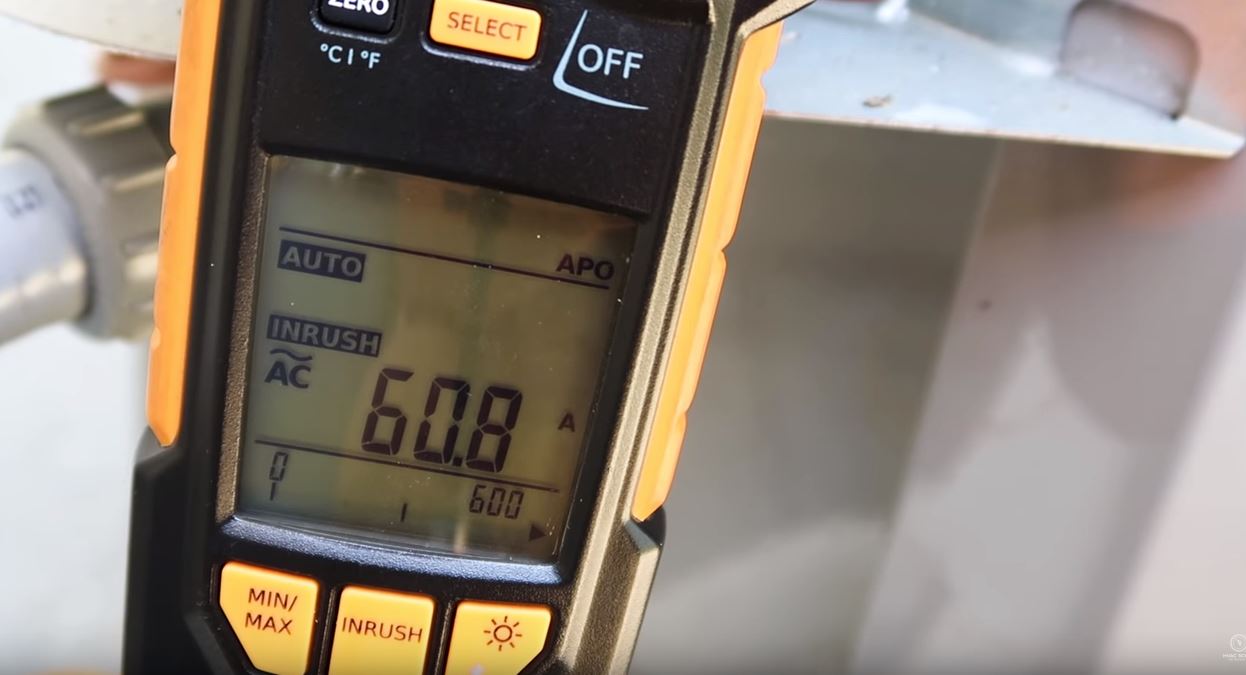Get Tech Tips
Subscribe to free tech tips.
Start Capacitor & Inrush Facts and Myths – Part #1

This series of articles is one of those that will bug a lot of people because it will go against a lot of what you've been told about compressors, start capacitors, and inrush current. For that reason, I want you to work through a few thought experiments first and maybe even stop and try it on your own unit before you get worked up.
Thought Experiment #1 – A Capacitor as a Balloon or Membrane

A capacitor stores electrical energy. The amount of electrical energy stored depends on the pressure (voltage) across the capacitor and the size of the capacitors (measured in microfarads for our purposes).
Think of the capacitor as a membrane that a water pump pushes against. Water can't go through the membrane, but it can be “stored” in the membrane to some extent on the higher pressure side. If the membrane is larger (higher microfarads) or the pressure differential across it is higher (voltage), the capacitor can hold more energy.
In alternating current, the pressure shifts from positive to negative 60 times per second (60 Hz) so that stored energy builds up and is released to and from the capacitor back and forth 60 times per second, but it's 90 degrees out of phase from the way the energy would be distributed if there were no membrane at all.
The point of this analogy is to anchor the reality that the amount of “water” that can move in and out of this membrane is completely dependant on the size of the membrane (capacitor) and the pressure (voltage) across it.
Wanna test for yourself? Connect 120v from a plug across a 20mfd capacitor and measure the amperage. Then, do the same with a 40mfd capacitor and measure the amperage. Do it safely—with proper PPE, of course—but what do you think you will find based on the analogy of the membrane?
Remember, current is just a measure of the quantity of electron flow. The larger capacitor will show a higher current even though that current is doing no real “work.” It is just moving in and out of the capacitor like a pressure tank.

Thought Experiment #2 – There is no “Common” winding
What happens when you walk up to a residential system and the run capacitor is failed open when there is no start capacitor?
The compressor draws “locked rotor amps” on the common, right?
But what is common? It is the point that connects the start and run windings. Then, it connects to the C terminal on the compressor after going through the thermal overload.
The common is a point that connects back to the line, but it is not a “winding;” there are only two windings (wraps of copper wire around the motor stator), and those are run and start.
When the system has a failed run capacitor, and you measure “LRA” on common, what do you think the amperage will be on Run? What about Start?
Try it next time you have a failed capacitor, or go out and safely disconnect your run capacitor and test.
Your run and common will read exactly the same (what goes in must come out), and your start will read zero amps. That is pretty obvious and intuitive; if your capacitor is failed, the only winding in the circuit is the Run, so common and run will be the same. The start winding can have no amperage because the capacitor is failed open.
So, the current on the start winding of a single-phase compressor is completely dependent on whether there is a capacitor in the circuit and the size of that capacitor.
Part #2 is coming tomorrow.
—Bryan











Comments
Bryan:
Above, in Thought Experiment #1, you wrote: “energy builds up and is released to and from the capacitor back and forth 60 times per second but at 90 degrees out of phase”.
Did you mean to write 180 degrees instead?
Thanks,
Brett
Bryan:
Above, in Thought Experiment #1, you wrote: “energy builds up and is released to and from the capacitor back and forth 60 times per second but at 90 degrees out of phase”.
Did you mean to write 180 degrees instead?
Thanks,
Brett
If it is just a capacitor and it has no voltage stored in it, the moment you turn on the power to the capacitor the current comes in and starts to load up on the plates. It is not till the plates are full of electrons does the voltage start to rise. A purely capacitive circuit will have the voltage and current 90 degrees out of phase.
If it is just a capacitor and it has no voltage stored in it, the moment you turn on the power to the capacitor the current comes in and starts to load up on the plates. It is not till the plates are full of electrons does the voltage start to rise. A purely capacitive circuit will have the voltage and current 90 degrees out of phase.
To leave a comment, you need to log in.
Log In